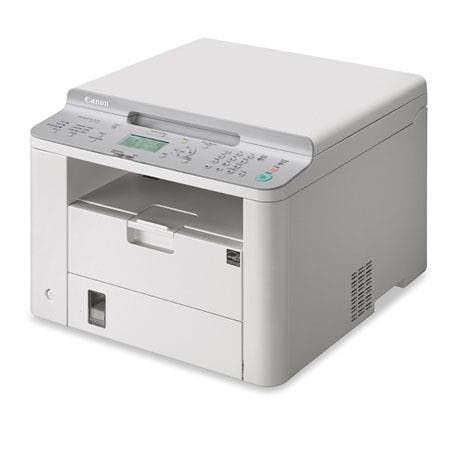Looking to make your home office more efficient? Need greater flexibility and capacity at a work office? Consider a multifunction center (MFC) printer, also known as a multi-device or all-in-one printer. These machines combine standard printer functionality with the ability to fax, scan, and copy—all within one manageable footprint.
With a Multi-Function printer (also known as an All-In-One printer), you can reclaim your desk space and stop making trips to the office center just to scan a photo or send a fax. More functions mean more choices. But, once you determine your primary needs, the selection process becomes easier. Just as important as the space saving aspects is that users do not have to sacrifice quality for space as the latest generation come with features that match most stand alone devices in any one of the categories that the multifunction competes in.
Pick a Task, Any Task
Before researching MFC printers, take a moment to consider the available functions. How important is each one, and which will you use most?
Not all MFC printers have fax capabilities, so if faxing is important to you, be sure to find one that does. (Keep in mind your computer may have fax software, so you might not need this particular feature.) Additional considerations include whether you want the ability to fax even when your computer is off and whether you need speed dial, or fax memory.
If the print function is most important, examine the same features that you would on a single-function printer. The print path is key if you commonly use such nonstandard media as envelopes, labels, or card stock. If you print large volumes, consider paper capacity. And, if you want double-sided prints, look for a unit that allows duplexing. If you plan to do photo printing, find an MFC printer that includes a slot for memory cards, and be sure the cards your camera uses are compatible.
Copy quality is important if this is the main function for which you plan to use an MFC printer. Go to a store that carries such printers, and use several of them to make test copies. Look for sharp edges, alignment of text, and vivid colors. Avoid units that produce copies that are blurry or show extra lines or other markings.
Do you plan to use your MFC printer primarily for scanning? If so, consider document placement options, which include a document feeder or flatbed arrangement. If you will be scanning books, magazines, or other objects that do not fit through a feeder, then the flatbed option is a better choice. Optical character recognition (OCR), which requires special software, is useful if you want text images converted to text for formatting or editing.
Feature Checklist
Once you know your priorities, you can further narrow your selection by checking out the details:
• Laser versus inkjet. Although inkjet machines are typically slower and more expensive to operate, they produce a higher-quality output.
• Monochrome versus color. Simply put, if you want to print in color or make color copies in addition to black and white, you need a color-capable machine.
• Cost of consumables. Remember to include paper and ink or toner cartridge costs as you tally up the total price.
• Bit depth. This specification measures scan quality. Look for a unit with a bit depth between 24 and 36.
• Memory. The more memory a machine has, the faster it will print. Look for at least 0.5 megabytes of standard memory.
• Resolution. A higher resolution means better print quality. Look for at least 600 dpi for standard printing or higher for more demanding tasks.
System Integration
Finally, you’ll want to make sure the product you choose will work well with your existing system. Measure the desk space you have available, and check the dimensions of each MFC printer to ensure that the unit you choose will fit. Find out what software comes with each machine and whether you will need to purchase additional applications, such as OCR. If you plan to use your printer through a network, be sure it is enabled for a wired or wireless setup (depending on which you plan to use).
Multi-function Printer Recommendations

The Brother DCP-L5500DN Multi-Function Monochrome Laser Printer with Duplex Printing and Networking is a $499.00 (Adorama-priced) device that is an affordable option that still meets a user’s varied needs. It has print and copy speeds of up to 42ppm and produces professional-looking output at up to 1200 x 1200 dpi. Designed for use in an office it supports both Windows and Macintosh operating systems for flexible in-house use.
If you are looking to crib your notes the printer has just the tool for you with the ability to save paper and create two-sided documents with automatic duplex printing. Also, create two-sided output from one-sided originals when copying. Offers advanced scanning features such as ADF Auto Deskew to automatically straighten skewed documents and Blank Page Skip to remove blank pages, eliminating the need for manual sorting and more.

Entry level systems in this class are increasingly powerful as can be seen in the $129.99 HP OfficeJet Pro 8710 Wireless All-in-One Thermal Inkjet Printer, available at Adorama. While you expect a multifunction device to have at the least the ability to print, copy, scan and fax, the OfficeJet Pro also prints high-quality photo printing as well. It is not for a busy office with only a 18 ppm print speed but for an individual small office that should suffice.
Capable of supporting both the Mac and Windows operating system it also has wireless capabilities so files can be sent to it without connecting the device via cable. It operates as a flatbed scanner with 1200×1200 dpi.

Entry level systems, while great for a home office or a small business, often do not meet the demands of a larger organization that might have multiple print jobs as well as scanning and other needs. A good introduction to that category is the Canon imageCLASS D530 Monochrome Multifunction Laser Printer Adorama for $199.99
It hums along with a 26 ppm print engine and is capable of a range of tasks including print, scan fax and copy. The black and white printer supports both a range of paper sizes as well as output file formats.






